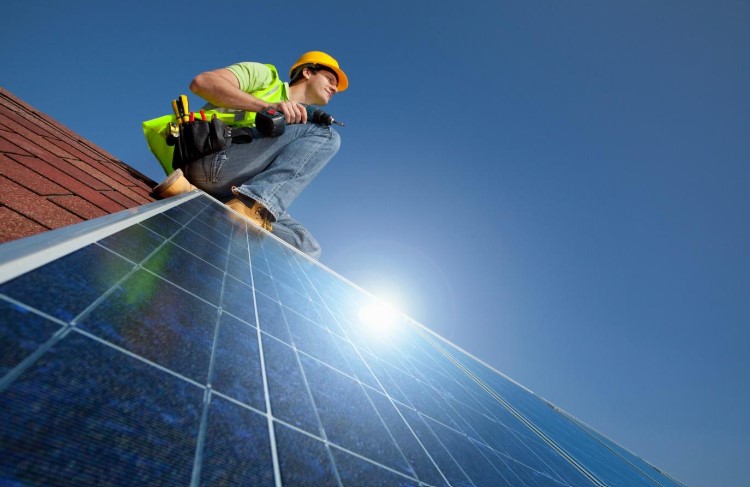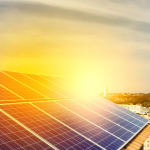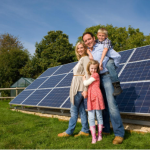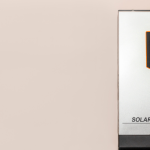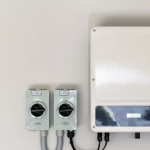How to Prepare Your Home for Solar Panel Installation
A solar panel installation is something that every homeowner dreams of, but it takes more than dreams to get solar panels on your home. You have to have the right mindset and be able to get ready for these huge installations.
If you want to prepare your home for a solar installation, you need to know more than what the solar company is going to do.
Want to know more? Then read on! Below, we’ll show you how to prepare your home for installation.
Understand Your Local Solar Panel Regulations
It is important to ensure that your home meets your local solar panel regulations before installation. Researching your local laws and regulations regarding solar panel installation is a must. This includes;
- Obtaining permits
- Being Aware of whether shading affects your eligibility
- Whether you need to meet specific zoning criteria
Additionally, checking to see if incentives and rebates are offered in your area is crucial for managing the cost of installing solar panels.
Education and preparation are key when it comes to solar panel installation. This ensures you are not violating any laws and that you can enjoy the benefits of solar energy.
Assess the Size of Your Property
If you want to switch to solar, you’ll need to assess the size of your property. Measure the total square footage of your property, then compare it to the amounts typically used by solar panel systems.
Depending on the area, a typical home covered with solar panels is about 100 – 200 square feet. Take note of the direction your home faces, and remember that a south-facing orientation is optimal for solar system performance.
Ensure there’s enough space and a proper roof angle to install the system properly. With the data in hand, you can consult solar professionals to determine the best type of solar energy to install.
Calculate Your Energy Needs
To prepare your home for solar panel installation, you will need to calculate your energy needs. This requires determining your electricity usage over the past 12 months and adding up the total kWh (kilowatt-hour) used.
You may also need to consider how much energy you will use in the future. Also, check if any energy requirements need to be taken into account for efficiency, such as:
- Running an air conditioner
- Running another energy-consuming appliance
Once you have an accurate energy forecast, you can shop for the right solar system for your home.
Estimate the Cost of Installation
To estimate the installation cost, start by obtaining quotes from multiple installers in your area. This can be done by using online resources or contacting local solar companies.
When you have quotes from different panel installers, evaluate them carefully, along with their average solar panel system prices and solar-plus-storage options. Additionally, compare the system cost to the average utility rate. This way, you can determine the payback period for investing in solar energy.
Lastly, ensure the installer you choose is properly licensed and insured. With these steps completed, you can be confident in the cost of solar panel installation and be well prepared for the process.
Identify Key Material Needs
To prepare your home for solar panel installation, there are several key materials that you will need. Firstly, you will need mounting equipment, such as aluminum rails, screws, and bolts. This will allow you to securely mount the solar panels to your roof or other area.
You must also purchase wiring, conduit, and electrical system components. This will allow you to route the electricity that is generated by the solar panels to where it will be used.
Lastly, you will need high-quality photovoltaic panels capable of producing the amount of power required. These can be purchased as a package and are often easy to set up.
By following these steps, you can ensure that your solar panel installation is successful.
Consider the Location of Your Installation
Ideally, your solar panels should be installed in an area where there is direct sunlight for most of the day. It would be better if you had a south-facing roof. By choosing a suitable location, you can maximize the efficiency of your solar panels.
Considerations should also include the angle of the installation in relation to the direction of sunlight. Consider also the structural integrity of the surface on which the panels will be mounted.
With careful planning, you can set up your solar panels in an optimal area. It is vital for harvesting the sun’s energy and ensuring an efficient and successful installation.
Prepare Your Roof Structure
Preparing your roof structure for solar panel installation is a critical step in the process. It’s essential to ensure that your roof can withstand the weight of the solar panel array to ensure the structural integrity of the roof.
First, check if any structural changes need to be made. Ensure that the roof can still hold the weight of the solar panels and that any additional support brackets are securely mounted.
Next, check for any loose shingles that could be a hazard and replace them if necessary. Also, inspect the roof for any vegetation that could potentially become a fire hazard over time and work with a professional to clear the roof.
Finally, make sure to clear the area around the installation to ensure an adequate workflow. Also, check for any obstructions that could cause the installation to become complicated or unsafe.
Take the time to properly prepare your roof structure to ensure a safe and efficient installation.
Establish a Solid Foundation
Establishing a solid foundation is one of the most important steps to having a successful solar panel installation. When installing your solar panels, the professional should install brackets and mounting systems on either the roof or the ground. This will ensure that the panels stay secure no matter what the weather or terrain might be.
You should also make sure that any holes created by the installation are properly sealed. This will prevent any water damage or leakage.
Additionally, you should ensure that all the wiring is properly connected and there are no loose cables running from the panels. Make sure also to keep the solar panels clear and free of any debris by pruning trees or other vegetation.
Lastly, all waste materials must be disposed of from the site, and any loose debris should be removed. Taking the time to establish a solid foundation not only ensures a successful installation but will also extend the lifespan of the solar panel system.
Schedule Any Required Electrical Upgrades
Electrical upgrades may be required to prepare the solar energy system. Prior to installation, you may need to upgrade your switchboard and circuit breakers so that they comply with the new solar power system.
You might as well replace any wiring or electrically damaged components. You should also make sure your home’s wiring is correctly installed, labeled, and routed appropriately.
Additionally, you should upgrade your grounding system. This ensures that the entire electrical system, from the solar panel array to the main panel inside your home, is electrically safe and connected.
By scheduling any required electrical upgrades, you can have a safe and efficient solar panel installation.
Check the Post-Installation Maintenance
After completing the solar panel installation, a homeowner needs to do additional steps for home maintenance. It is essential to regularly check the panel’s performance, such as:
- Shade or dirt accumulation
- System references
- Power generated
- System voltages
Start with making sure the solar modules are in good working condition, then move to check the array cabling and connections. Check also the inverter performance for any potential electrical or mechanical faults.
Visit the roof regularly to ensure all panels are working properly and securely mounted to the roof. If any issues are detected, contact the best solar company to discuss possible fixes.
Monitor the system’s output and compare it to the manufacturer’s specifications. If the system is not meeting the expected performance, contact them immediately to assess any possible solutions.
Periodically Check the Warranties and Insurance
Before the panels are installed, make sure to check the product warranties and performance guarantees. Look for any documents related to the warranties offered by the company from which you are purchasing the panels.
Additionally, confirm that the contractor you are hiring to install the panels is insured and that any potential liabilities should something go wrong are covered. You should also make sure you have homeowner’s insurance to cover any installation mishaps.
Make sure to read the details of any warranties or insurance policies to be aware of any exclusions or restrictions. Doing your research and ensuring all warranties and insurance policies are kept up to date will ensure a stress-free and successful solar panel installation period.
Prepare Your Home for Solar Panel Installation Today
Preparing your home for solar panel installation can be daunting. However, with careful research, the right solar installer, and the right equipment, you can make the process of solarizing your home easier.
For more information and assistance, consult a solar professional. Don’t wait—now is the time to save money and energy with solar!
Did you find this article helpful? If so, make sure to check out the rest of our blogs!

